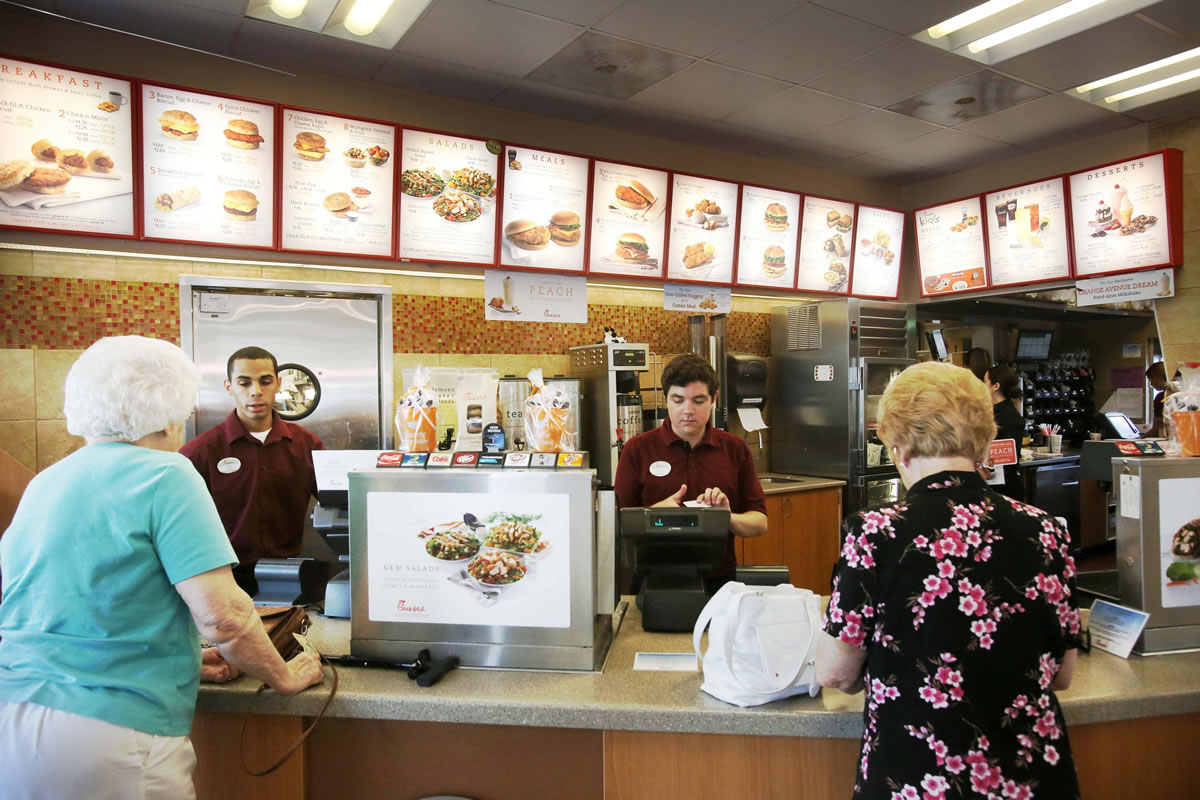Three years after Congress voted to require it, you still won’t find calories listed on the menus of most restaurant chains.
The problem? The federal government has yet to write the specific rules to carry out the law, in part because supermarkets are balking at it.
“It does make you wonder, why all this procrastination?” Orlando, Fla., dietitian Jo Lichten said. “Research shows people want to have the nutrition information. They make better choices when they have the numbers.”
The Food and Drug Administration hopes to have the regulations in place later this year. Restaurants would likely have six months from then to comply.
“We received a lot of comments, and we’re still just going through them, taking them into consideration,” FDA spokeswoman Shelly Burgess said.
A big sticking point has been a fight over whether to require calorie counts for supermarket-made foods such as rotisserie chicken and sandwiches. Grocers seeking an exemption include Lakeland, Fla.-based Publix Super Markets, according to federal lobbying records.
The company would not comment, referring questions to Food Marketing Institute, an industry trade group.
Posting calories would cost grocers about $1 billion in the first year alone, said Erik Lieberman, a Food Marketing Institute attorney. He said that’s because supermarkets would have more prepared foods to analyze than restaurants have menu items.
And the regulations are expected to include fruit salads and baked goods such as loaves of bread and whole pies, which consumers generally don’t eat in one sitting as they do restaurant food.
Packaged products on supermarket shelves already are required to provide nutritional labels.
But the National Restaurant Association and health-advocacy group Center for Science in the Public Interest, which negotiated the menu-labeling law, say adding supermarkets’ prepared foods is necessary to level the playing field.
“Increasingly, people are picking up prepared dinners, sandwiches, salads and bakery items at grocers or convenience stores in place of takeout at restaurants,” said Margo Wootan, the Center for Science in the
Public Interest’s nutrition-policy director. “So it’s only fair, businesswise.”
Grocers back a bill called the Common Sense Nutrition Disclosure Act of 2013 (H.R. 1249), introduced in March by Rep. Cathy McMorris Rodgers, R-Spokane. It requires nutrition labeling only for businesses that get most of their sales from prepared meals.
Some pizza chains, including Domino’s, Papa John’s and Little Caesars, support that legislation, too, because it would also allow takeout places to post information online rather than on menu boards. It would also allow foods that are often shared, such as pizza, to list calories per individual serving.
But even as the government tries to figure out the details, some restaurants including Panera Bread, McDonald’s and Chick-fil-A, have started posting calories on their own.
Orlando-based Nature’s Table Cafe plans to join that list in the next few months. The chain, which has locations in several Southern and Western states, already provides nutritional information online. Still, Vice President Rich Wagner said, many customers have said they would prefer to see calories on menus.
“Our nutritionals look pretty good,” Wagner said. “We’re going to be proud about putting them up.”
Orlando-based Darden Restaurants, which owns Red Lobster, Olive Garden and other chains, now lists calories, fat and sodium on children’s menus at its Bahama Breeze restaurants. Darden says it will wait for final regulations to come out before doing anything more.
The national menu labeling law came about as a compromise between the restaurant industry and public-health advocates. The deal came after places such as New York City began requiring calorie disclosure. Many restaurants decided a national standard would be better.
As originally written, the requirement, part of the Affordable Care Act in 2010, requires chains with 20 or more restaurants to disclose calories on menus. If customers ask about other nutritional details, such as sodium levels, carbohydrates and saturated fats, the restaurants must provide it in writing.
Health advocates say providing nutritional information will steer people toward more-healthful choices. They also expect restaurants to revamp recipes and menu items so customers don’t get caloric sticker shock.
Dustin Moody of Orlando said he first became aware that his coffee beverages had hundreds of calories after seeing a Starbucks menu in New York City. Now he often steers away from the sugary stuff in favor of plain old coffee.
The numbers are “not something I would normally seek out,” said Moody, 29, a marketing manager. “But if it’s there, it’s helpful to know.”



